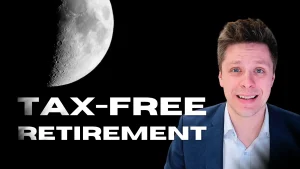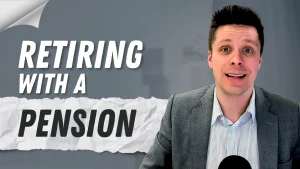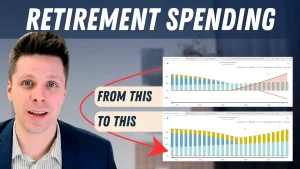[vc_row css=”.vc_custom_1612380408194{padding-top: 20px !important;padding-bottom: 20px !important;}”][vc_column][vc_video link=”https://youtu.be/p6Pi6W-1c9A” css=”.vc_custom_1648516766968{padding-top: 20px !important;padding-bottom: 20px !important;}”][vc_column_text css=”.vc_custom_1648521346724{padding-top: 20px !important;padding-bottom: 20px !important;}”]
Video Transcript
Today I want to talk about 3 reasons retirement plans fail.
First Reason
The first reason your retirement plan can fail is oversimplification.
I was speaking with a gentleman a few weeks ago, who was wondering whether he was on track to retire. In his eyes there was no problem, he had a $1,000,000 retirement portfolio. He wanted to be able to spend $50,000 per year and he expected to live, at max, for another 20 years. If you took the investment returns out of it, this should not be a problem. He would be able to take out $50,000 a year from his $1,000,000 portfolio and it would last 20 years.
However, there are two things that he was overlooking. The first being taxes and the second being inflation.
A good portion of his portfolio was in RRSPs and when you take money out of RRSPs you will have to pay taxes. If you want to be able to spend $50,000 per year, you will have to take out roughly $65,000. By taking out $65,000 a year out of his portfolio his $1,000,000 will only last 14 years.
As we know the cost of everything goes up every year. Let us just imagine that inflation is running at a rate of 4%. If he needed $50,000 this year, he would need $52,000 next year to be able to buy the same things as his $50,000 today. When you add a 4% inflation rate to the calculations, his money would only last for 12 years.
It goes without saying that this gentleman was extremely happy that he took another look at his retirement plan or else he out have been back at work in 12 years.
The first mistake, make sure you don’t oversimplify things.
Second Reason
The second reason that your retirement plan can fail is if only one spouse knows what’s going on. When there is only one person taking care of all the investing, retirement planning, and tax planning, what happens if that person were to pass away? Would the surviving spouse know what to do with all the financials of the household?
Even if you are doing your own investing or your own tax planning, it might be a good idea to bring in a financial planner that the surviving spouse is comfortable with. That way there’s an outlet to transition financials in the future so that the surviving spouse isn’t left with their hands up in the air.
Imagine this, you are 60 today. If something happens to you in 15 years, you’re 75. Do you really want to put your spouse in a position where they have to start figuring things out at that age? As I mentioned, it might be a good idea to bring in a financial advisor just so that the surviving spouse is comfortable with someone if they do have to take over.
Third Reason
The third reason that your retirement plan can fail is bad investment management. This is the scariest one to me but it’s also the easiest one to avoid. This often happens when working with financial advisors.
What happens when you work with a financial advisor is that you are going to ask them to invest your money and they are going to fill in a risk profile questionnaire with you. That questionnaire is going to give them an idea as to what your comfort level is with investing.
Let us say you are a moderate investor. This means that you are comfortable having half of your money in growth investments, which are going to fluctuate over time. The other half of your money in conservative investments, which have more slow and steady growth. What ends up happening a lot of the time is your money is put into one simple portfolio, let us say mutual fund.
The issue is, what if the market goes through a bad year? Say the growth portion of your portfolio goes down by 20% while at the same time the conservative piece of your portfolio is flat, the combined return of this portfolio is -10%. If you are retired and taking money out -10%, taking money out at a loss, there is no chance that money is ever going to come back up.
The Alternative
What you should do is have different pieces of your portfolio. You can have a growth piece but be sure to also have a conservative piece. If your growth portion is down 20% and your conservative is flat, this allows you to take out money from the conservative side. Rather than taking money out of the whole portfolio while it’s down 20%. This gives the growth piece that is down 20% time to recover which it will do over time.
Here is a video on how to properly manage a portfolio with a bucketing strategy.[/vc_column_text][vc_video link=”https://youtu.be/q9N2DAt0Djk” css=”.vc_custom_1648517192699{padding-top: 20px !important;padding-bottom: 20px !important;}”][vc_column_text css=”.vc_custom_1648516945738{padding-top: 20px !important;padding-bottom: 20px !important;}”]This is an easy one to avoid just by looking at your portfolio. If you find that you are in a balanced or moderate mutual fund and you do not have many other holdings, then this is something that’s easily avoidable.
To recap, 3 reasons a retirement plan can fail
- Oversimplification
- Only one spouse is involved in the planning
- Poor Investment Management
[/vc_column_text][/vc_column][/vc_row]





